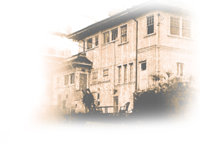Read: Crack Cocaine: A Short History
CRACK COCAINE: A SHORT HISTORY
While the use of coca leaves as an intoxicant dates back three thousand years, crack cocaine, a crystallized form of cocaine, was developed during the cocaine boom of the 1970s and its use spread in the mid-1980s.
According to the US Drug Enforcement Agency, by the late 1970s there was a huge glut of cocaine powder being shipped into the United States. This caused the price of the drug to drop by as much as 80%. Faced with dropping prices for their illegal product, drug dealers converted the powder to “crack,” a solid form of cocaine that could be smoked.
Broken into small chunks, or “rocks,” this form of cocaine could be sold in smaller quantities, to more people at bigger profit. It was cheap, simple to produce, easy to use, and highly profitable for dealers.
As early as 1980, reports of crack use were appearing in Los Angeles, San Diego, Houston and the Caribbean.
The biggest surge in the use of the drug occurred during the “crack epidemic,” between 1984 and 1990, when the drug spread across American cities. The crack epidemic dramatically increased the number of Americans addicted to cocaine. In 1985, the number of people who admitted using cocaine on a routine basis increased from 4.2 million to 5.8 million.
By the end of 1986, crack was available in twenty-eight states and the District of Columbia. By 1987, crack was reported to be available in all but four states in the United States. Since then, use of the drug has continued to spread throughout North and South America and into Europe and the rest of the world.
By 2002, the United Kingdom was experiencing their own “crack epidemic,” with the number of crack addicts seeking help climbing nearly 50% that year. The UK reported an increase of 74% in seizures of crack cocaine in drug raids between 2000 and 2006.The majority of European crack cocaine users are located in three cities—Hamburg, London and Paris. But crack cocaine use has also been reported as a significant problem in three French overseas territories—Guadeloupe, French Guiana and Martinique—and in some communities in the Netherlands.





